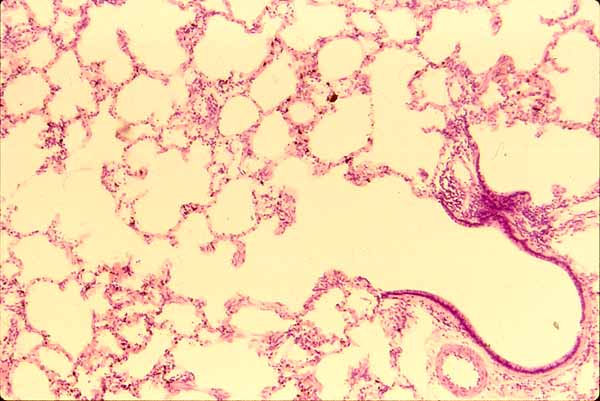bio topic list says:
2. Breathing mechanisms
b. resiliency and surface tension effects
what does this mean?
2. Breathing mechanisms
b. resiliency and surface tension effects
what does this mean?
what is surface tension in the context of lungs?

There's liquid (presumably primarily water) lining the alveoli. Like any other surface tension, the interactions between the liquid molecules pull them closely together and therefore make the alveoli want to collapse.
why would they want to collapse?
So the surfactant is on top of this liquid? How does it prevent collapse?
So some liquid coats the lungs that gives it a high surface tension. There forms a tendency to collapse. But surfactant reduces this tendency somehow.
It still seems weird to use surface tension to describe this because I can see the effect in a liquid but alveoli are spatially separated from each other.

So some liquid coats the lungs that gives it a high surface tension. There forms a tendency to collapse. But surfactant reduces this tendency somehow.
It still seems weird to use surface tension to describe this because I can see the effect in a liquid but alveoli are spatially separated from each other.
